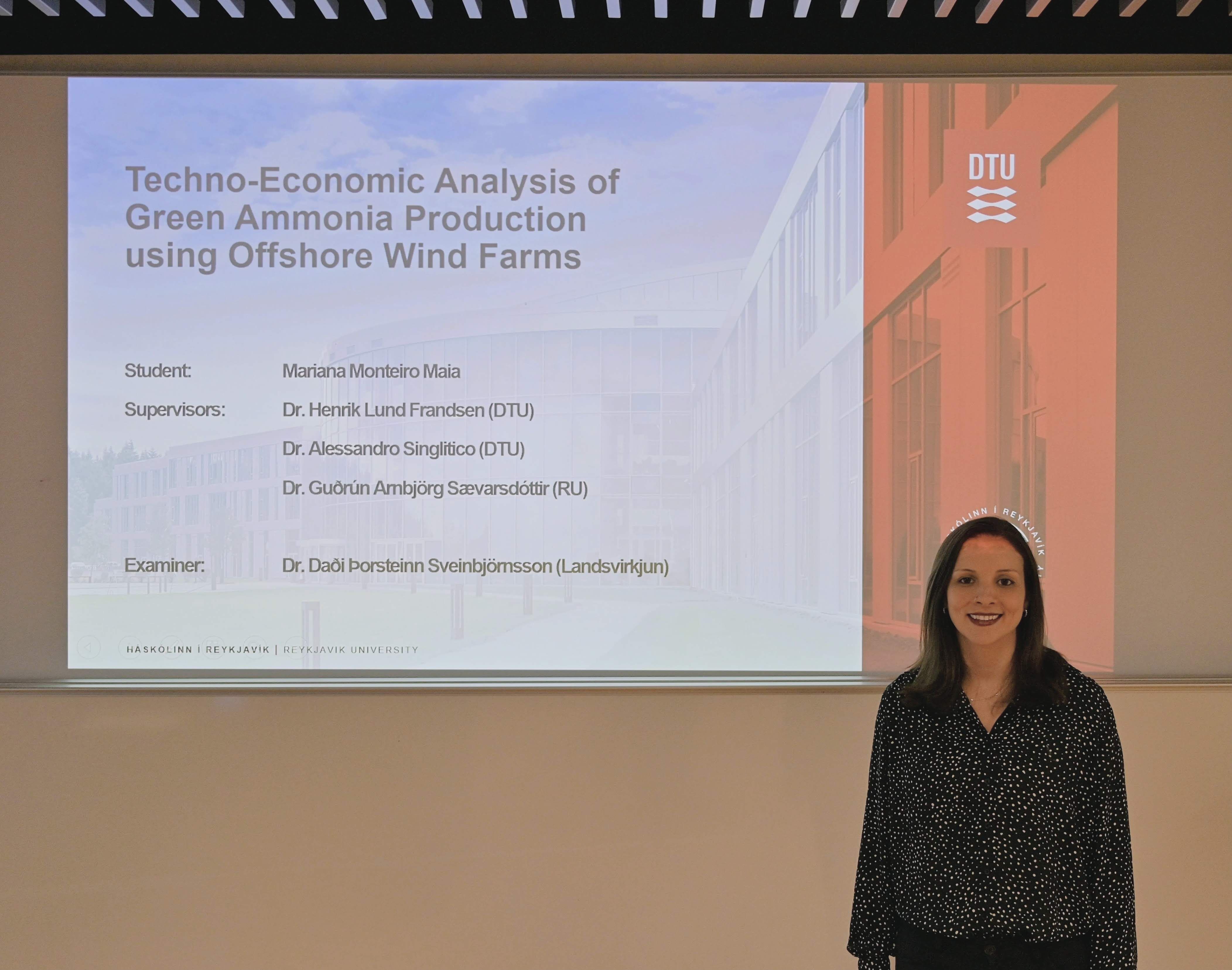MSc Thesis: Techno-Economic Analysis of Green Ammonia Production using Offshore Wind Farms
REYKJAVIK, May 26 - MSc in Sustainable Energy Engineering candidate, Mariana Maia, successfully defended her master's thesis where she presented a Techno-Economic Analysis of Green Ammonia Production using Offshore Wind Farms. Mariana's work was supervised by Dr. Guðrún Sævarsdóttir from Reykjavik University, Dr. Henrik Frandsen from Technical University of Denmark and Dr. Alessandro Singlitico from Technical University of Denmark.
 Mariana began by highlighting that there is a great potential to reduce CO2 emissions by replacing hydrogen generated from fossil fuels with green hydrogen in ammonia production and replacing fossil fuels in the transportation sector with this green ammonia. In her thesis, Mariana evaluated a total of 8 different scenarios of production, location and transport of green ammonia, considering a 2030 scenario in Europe for a 12 GW so-called energy island in the North Sea.
Mariana began by highlighting that there is a great potential to reduce CO2 emissions by replacing hydrogen generated from fossil fuels with green hydrogen in ammonia production and replacing fossil fuels in the transportation sector with this green ammonia. In her thesis, Mariana evaluated a total of 8 different scenarios of production, location and transport of green ammonia, considering a 2030 scenario in Europe for a 12 GW so-called energy island in the North Sea.
The three different locations she considered for the conversion facilities: i) utterly offshore ammonia production, ii) utterly onshore ammonia production, and iii) offshore hydrogen production, followed by onshore conversion into ammonia. Four different interconnecting infrastructures are considered for the energy distribution: i) transmission of gaseous hydrogen via pipeline, ii) transmission of liquid ammonia via pipeline, iii) bunkering of ammonia, iv) transmission of electricity via high-voltage direct current cable. Two types of electrolysis technology are considered: alkaline (AEC) and solid oxide electrolysers (SOEC). These are assumed to have a capacity of 4 GW, to be fed with the peak load of the energy island and to operate at least at 10% of their capacity.
Her analysis indicated that SOEC were proven to have the best overall production efficiency, especially when combined with Haber-Bosch in the same plant, and are estimated to have a smaller CAPEX than AEC for a large electrolyser nominal power due to steeper economies of scale. Ammonia production offshore and distribution via bunkering resulted in the best production efficiency and smaller CAPEX, followed by transporting ammonia to shore via pipeline. The high cost of electrical transmission to shore and lower production efficiencies make the scenarios in which ammonia is produced onshore, and the hydrogen is produced offshore and converted to ammonia onshore less economically beneficial than the utterly offshore ammonia production.
Furthermore, her results showed that LCONH3 is higher than conventional ammonia for all scenarios. Mariana pointed out that green certificates can reduce LCONH3 enough to compete with conventional ammonia production for all scenarios. While carbon taxation with current market values is not enough to reduce LCONH3 to a competitive level. It would be necessary to have carbon taxation between 129-336 €/tonne of CO2 emitted to make all scenarios economically competitive.
Congratulations Mariana for an excellent thesis defence!
